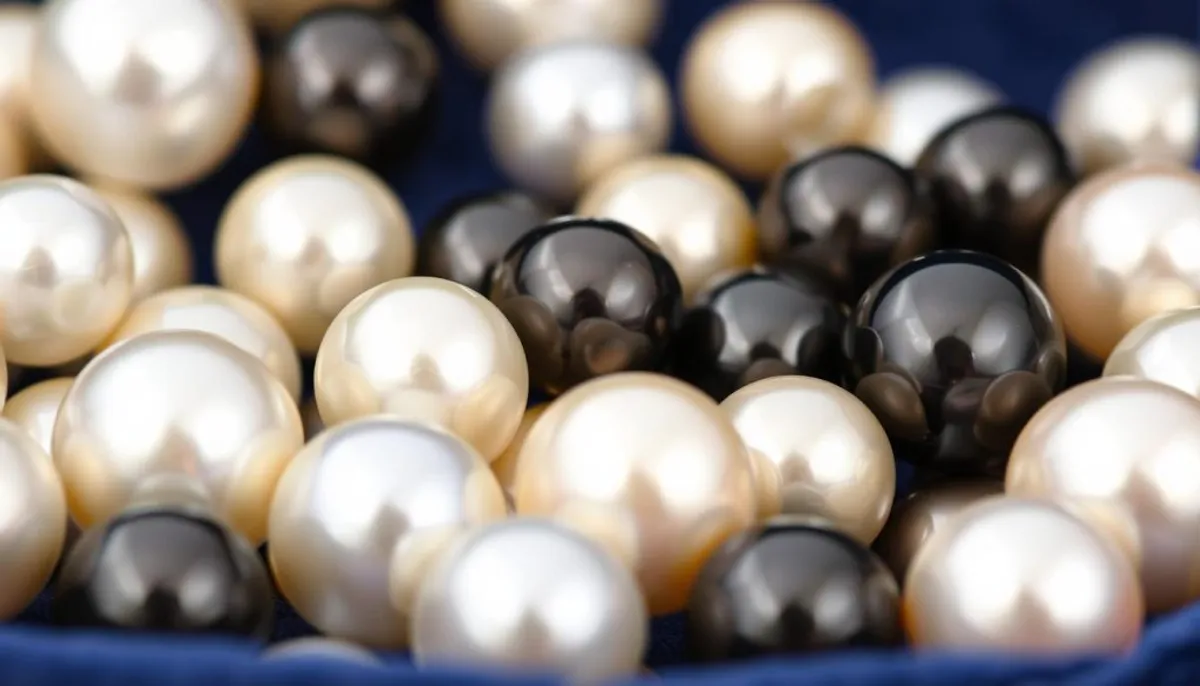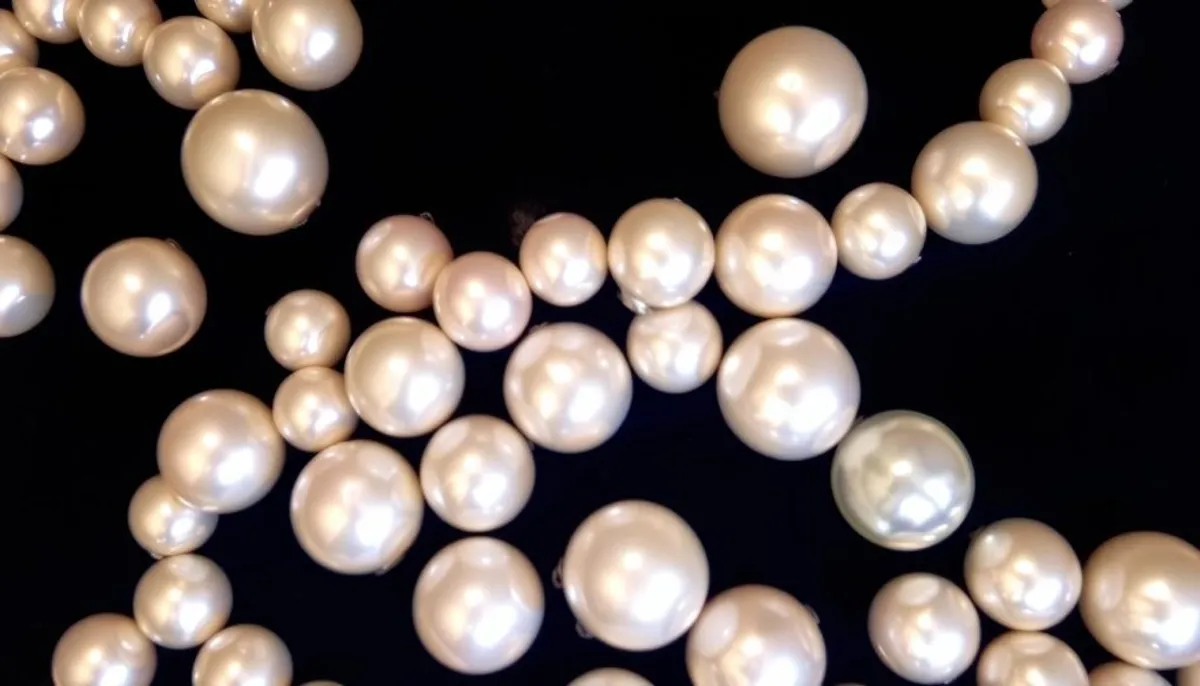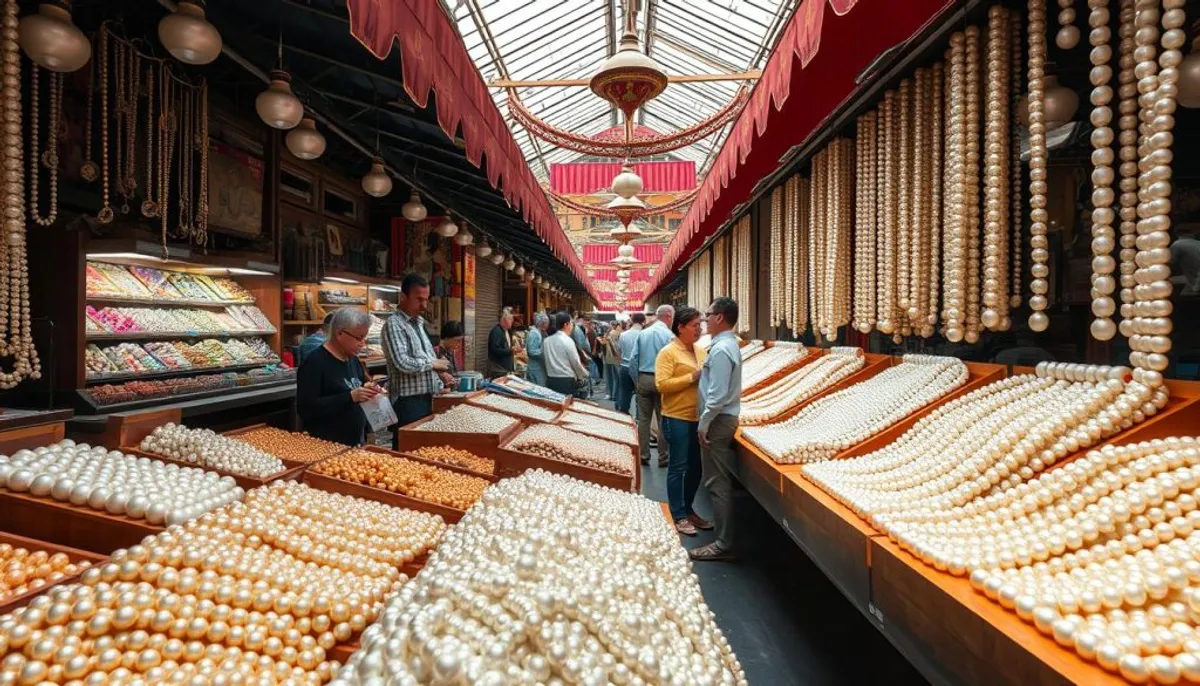
Pearls, these jewels of the sea, have fascinated for centuries. How can you tell a real pearl from a fake one? This guide will help you verify the authenticity of pearls, whether they are natural or cultured.
Natural pearls, formed spontaneously in oysters, have become rare. They represent only 1% of the market. Cultured pearls, stimulated by the insertion of a foreign body, dominate today. A strand of fine pearls can be worth up to 20,000 euros, compared to 200,000 dollars for its equivalent in cultured pearls.
To recognize a real pearl, observe its surface. Authentic pearls display subtle irregularities and unique color nuances. They also feel cooler to the touch than fakes. The tooth test, although controversial, can reveal the slightly gritty texture of a real pearl.
The quality of pearls varies. The classification system ranges from AAA for excellence to A-D for lower qualities. Akoya pearls from Japan and South Sea pearls from Australia are among the most prized. Choose according to your budget and preferences, keeping in mind that authenticity is what gives a pearl its value.
Types of pearls and their distinctive characteristics
The diversity of pearl varieties is fascinating. Each type has unique characteristics reflecting its origin and formation process. For those wishing to discover Europe, let’s explore the main categories of these marine jewels.
Freshwater pearls
Freshwater pearls mainly come from China. They are appreciated for their affordability and durability. Cultivated in freshwater mussels, they offer a variety of shapes and colors, ranging from creamy white to lavender.
Tahiti pearls
Tahiti pearls, sourced from Polynesian lagoons, are famous for their exotic hues. These black pearls, with their green, blue, or aubergine reflections, embody the luxury and mystery of the South Seas.
Akoya pearls
Akoya pearls, cultivated in Japan, embody classic elegance. They are known for their white nacre, perfectly round shape, and exceptional luster.
South Sea pearls
South Sea pearls, cultivated in Australia, Indonesia, and the Philippines, are the largest and most valuable. Their thick nacre gives them an incomparable silky luster.
| Type of pearl | Origin | Dominant color | Average size |
|---|---|---|---|
| Freshwater | China | White to lavender | 5-10 mm |
| Tahiti | French Polynesia | Black, green, blue | 8-14 mm |
| Akoya | Japan | White | 6-8 mm |
| South Seas | Australia, Indonesia, Philippines | Creamy white to gold | 10-15 mm |
How to verify cultured pearls
Authenticating cultured pearls requires precise authentication methods. Here are some reliable pearl tests to distinguish real from fake.
The touch temperature test
Authentic pearls feel naturally cool to the touch. Place the pearl on your palm for a few seconds. If it stays cold and takes time to warm up, it is real.
Examination of luster and orient
The luster of pearls is crucial. Observe the surface closely: real pearls have a deep shine and iridescent reflections. Artificial pearls have a duller appearance or a shine that is too perfect.

The tooth test
Gently rub the pearl against the edge of your tooth. A real pearl will have a slightly gritty texture. A fake one will be smooth. Be careful not to damage the pearl during this test.
Observation of natural imperfections
Examine the surface of the pearl with a magnifying glass. Cultured pearls show slight natural irregularities. Pearls that are too perfect or identical are often artificial.
| Characteristic | Cultured pearl | Artificial pearl |
|---|---|---|
| Temperature | Cool to the touch | Room temperature |
| Luster | Deep and iridescent | Dull or too perfect |
| Texture | Slightly gritty | Smooth |
| Surface | Slight imperfections | Perfectly uniform |
These pearl tests will help you verify the authenticity of your cultured pearls. If in doubt, consult a jewelry expert for a professional evaluation.
The quality criteria of pearls
The evaluation of pearls is based on six essential criteria. These criteria determine their quality and value. Nacre, brilliance, surface, shape, color, and size are crucial. Each contributes to the classification of pearls.
Size and shape
The size of pearls directly influences their price. Shapes vary: round, near-round, button, drop, baroque, or circled. The method of harvesting perfectly round pearls is what makes them the most sought after and expensive.
Color and shades
The color of pearls is a major aesthetic criterion in the field of art and culture. It is often chosen based on the skin tone of the wearer. Shades range from creamy white to black, including pink, golden, or lavender tones.
Nacre thickness
Nacre is essential to the quality of pearls. Thick nacre increases value and enhances luster. Three classifications of nacre quality exist: quality standards, dull nacre with a visible nucleus, and that which resembles plastic pearls. Additionally, it is important to explore post-mediation strategies to better understand the nuances of pearl quality.
The AAA to A classification system
The classification system for cultured pearls ranges from AAA to A, with AAA being the highest quality. This scale considers all the previously mentioned criteria. For Tahitian pearls, a specific scale from A to D is used.
| Criterion | Importance | Impact on value |
|---|---|---|
| Nacre | Essential | High |
| Brilliance | Very important | High |
| Surface | Important | Medium |
| Shape | Variable | Variable |
| Color | Subjective | Variable |
| Dimension | Important | High |
Price and value of cultured pearls
The pearl market presents a variety of prices influenced by type and quality. Estimating pearls is complex, depending on origin, size, and shape. Tahitian pearls, for example, range from less than 200€ for the lowest qualities to over 36,000€ for exceptional specimens.
Akoya pearls, known for their brilliance, sell between 100€ and 6,000€. Freshwater pearls, more affordable, start at 20€ and can reach 4,000€ for the finest. South Sea pearls, on the other hand, range from 150€ to 135,000€ for the rarest.

Size plays a crucial role in value. Akoya pearls measure between 2 and 10 mm, while South Sea pearls can reach 20 mm. The round shape is the most sought after, followed by oval and button shapes.
Investing in pearls requires a deep understanding of the market. The sought-after colors vary by type: peacock for Tahitian pearls, white for Akoya, lavender for freshwater pearls, and gold for South Sea pearls.
| Type of pearl | Low price | Average price | High price |
|---|---|---|---|
| Tahiti | <200€ | 200-600€ | 1000-36000€+ |
| Akoya | <100€ | 150-300€ | 400-6000€+ |
| Freshwater | <20€ | 30-50€ | 65-4000€+ |
| South Seas | <150€ | 150-350€ | 1200-135000€ |
Care and preservation of authentic pearls
The care of pearls is crucial for maintaining their splendor and value. They contain about 4% water, making them vulnerable to drying out. Regular maintenance and optimal storage conditions are essential to preserve the beauty of pearl jewelry.
Proper cleaning
Avoid abrasive products and harsh brushes for pearl maintenance. Clean them with a soft, slightly damp cloth. Cosmetic products, such as hairspray and perfumes, can dull their shine. Put on your pearls last when getting ready.
Ideal storage conditions
Storing pearl jewelry requires specific precautions. Adopting a surf lifestyle can also influence how you care for your jewelry. Store them separately from other jewelry to avoid scratches. Use individual boxes or soft fabric pouches. Avoid overly dry places that could dry them out.
Daily usage precautions
The natural moisture of the skin is beneficial for the luster of pearls. Regularly check the integrity of the knots that hold the pearls in place. It is recommended to have your necklaces examined annually by a jeweler. After use, let your jewelry dry flat to preserve the thread.
| Tip | Frequency | Importance |
|---|---|---|
| Gentle cleaning | After each use | High |
| Checking knots | Monthly | Medium |
| Professional examination | Annually | High |
How to avoid counterfeits
Buying authentic pearls requires heightened attention. The market is rife with fake pearls and imitations, making purchases difficult. To acquire authentic pearls with peace of mind, it is crucial to follow precise advice.
Opt for a reputable seller like Amfivolie, an expert in high-quality freshwater pearls. Ask for details about the origin and specifics of the pearls. Ensure to check the authenticity certificates accompanying your purchase.
Learn to distinguish real pearls from imitations:
- Authentic pearls are heavier than those made of plastic or glass
- Natural pearls show subtle imperfections
- The luster of real pearls is deep and complex
Be cautious of offers that seem too attractive. Natural pearls are rare and therefore expensive. If the price seems too low, it is likely imitations. Choose sellers who offer a satisfaction guarantee and solid after-sales service.
| Characteristic | Authentic pearls | Imitations |
|---|---|---|
| Weight | Heavier | Lighter |
| Texture | Slightly rough | Perfectly smooth |
| Luster | Deep and complex | Artificial or dull |
| Durability | Resistant to time | Degrade quickly |
By following these guidelines, you will increase your chances of obtaining real pearls. Remember, a thoughtful choice from a reliable seller is the best defense against counterfeits.
Conclusion
The choice of authentic pearls requires careful attention. Real pearls, whether natural or cultured, possess unmatched beauty. They are distinguished by a slightly gritty surface, a cool texture, and imperfections that enhance their charm.
For a wise investment in jewelry, it is essential to be able to identify quality pearls. Simple tests, such as rubbing against teeth or observing the luster, are useful. A close examination of pearls with a magnifying glass reveals topographical lines, signs of authenticity. If in doubt, a gemology expert can guide you.
Authentic pearls, whether from Akoya, Tahiti, or the South Seas, are a symbol of timeless fashion and a sustainable investment. Their variety of sizes, colors, and origins allows for finding the perfect pearl for every taste and budget. By taking care of your pearls, you ensure their natural and unique beauty for years to come.
RelatedRelated articles


